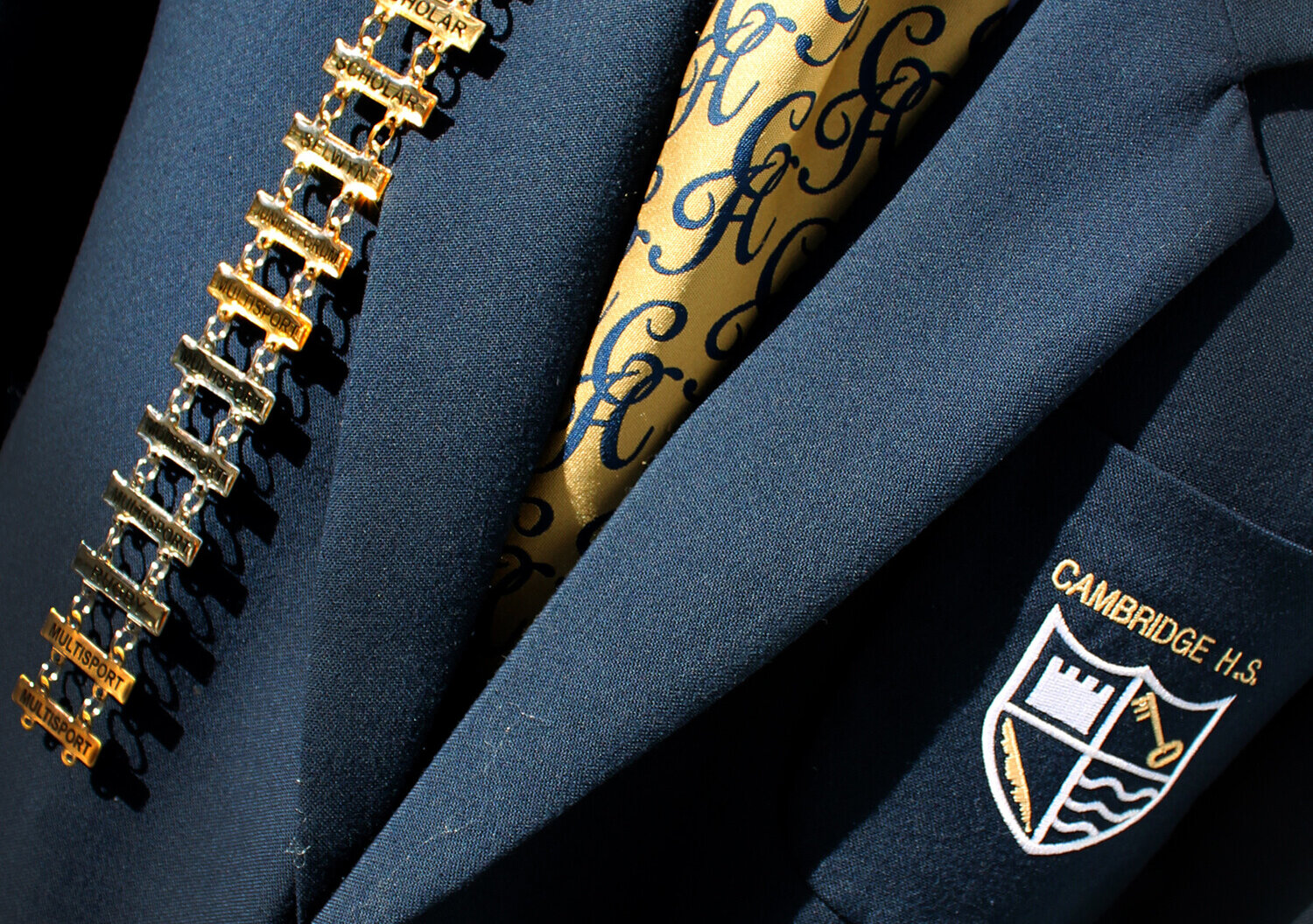Our History
Cambridge High School began life on July 2, 1883 with a modest roll of 23 students. It was a difficult few years for the school in those early days. Indeed, the school was closed between 1887 and 1902.
The roll had stabilised to such a degree by 1923 that the Clare Street facility, which now houses the Middle School, was acquired. A period of steady growth in both numbers of students and facilities began and continued throughout the 1940s.
In 1953 the High School achieved its full post-primary status under a new Headmaster, Mr J.L. South, and embarked on a decade of expansion. In 1960 (officially opening in 1962) the school underwent another geographical shift to its present position along Swayne Road where eventually five classroom blocks were built. By the end of Mr South's time the school roll had grown to 570.
The school is proud of its past but is also very forward thinking and innovative in its approach to learning. The school has a current role of around 1700.
Our Crest.
Several symbols are enclosed within a traditional heraldic shield divided into four quadrants, each with a key symbol:
The feather quill: symbolises learning and knowledge
The castle: symbolises tradition and lasting strength
The key: symbolises respect and which relates to the ‘key to life'
The river: symbolises - through its journey to the sea - the journey of life, and life-long learning.
Our Motto
Cambridge High School's motto - "fortiter et recte" - means "to be strong, or to have the courage to do the right thing." This motto, combined with the shield, is a constant reminder to our school community that moral strength and learning provide the key to the journey of life
Tuu Maaia kia Tika
NEW ZEALAND EXPEDITIONARY FORCE GOES OVERSEAS.
In 1914, there were four military districts in New Zealand: Auckland, Wellington, Canterbury and Otago. Each district recruited territorial soldiers to serve in their local area, in different regiments. There were four regiments in the Auckland District: the 3rd (Auckland), 6th (Hauraki), 15th (North Auckland), and 16th (Waikato). Each Military District had to provide a Regiment of Infantry, composed of one battalion. The four regiments forming the New Zealand Infantry Brigade, consisted of the Auckland, Wellington, Canterbury, and Otago Battalions. The Infantry Brigade, together with a Brigade of Mounted Rifles, Artillery, and Divisional Troops formed the original Main Body of the N.Z.E.F. Each of these regiments provided a company, and also certain specialists, to form the battalion for service overseas. The four companies of the battalion thus formed retained the names and badges of the Territorial Regiments from which they were drawn. The Cambridge High School old boys mainly served with the 16th (Waikato) Company commanded by Captain MacDonald. Volunteers left Cambridge and many found their introduction to service life at Alexandra Park. Personal records refer to soldiers going overseas on different reinforcements throughout the war. Fresh troops and casualty replacements were sent out after training. They travelled on ships chartered for the task, such as HMNZT 3. With each voyage undertaken the ship concerned under New Zealand Troop Transport was given a new number. Many of the ships undertook many voyages. For example the SS MAUNGANUI was involved in seven transports and so was numbered, HMNZT 03, 17, 24, 30, 86, 96 & 103



